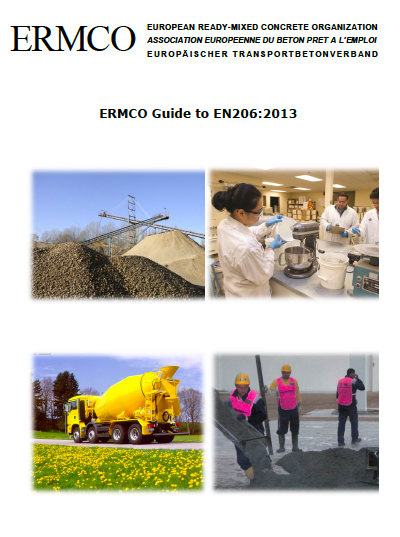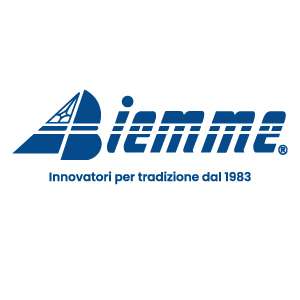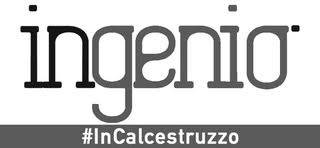CONCRETE: ERMCO has provided a Guide to EN 206, the new European standard for concrete
The revision of the European standard for concrete, EN 206, has been sent to national standards bodies for publication. Publication of this revised standard at the national level should be expected at any time between now and June 2014.
 The revision of the European standard for concrete, EN 206, has been sent to national standards bodies for publication.
The revision of the European standard for concrete, EN 206, has been sent to national standards bodies for publication.
Publication of this revised standard at the national level should be expected at any time between now and June 2014.
ERMCO has provided a Guide to EN 206: www.ingenio-web.it/immagini/CKEditor/ermco-guide-to-en206-2013-8_1_2014-final-amd1-1.pdf
1. Introduction
This Guide has been prepared by ERMCO with the prime purpose of providing guidance to its members on the application of EN 206:2013; however, the information provided will be of interest to all users of EN 206. While ERMCO was actively involved in the revision of EN 206, the discussions, compromises and interpretation of particular clauses are known to those on the committees, but not to the wider ERMCO membership and users of EN 206. One objective of this Guide is to make this information more widely known and available to those who in the future will be revising EN 206.
This Guide is aimed at providing background information and guidance on the interpretation and application of selected clause changes to EN 206. In a few cases, it explains how a clause that was not changed should be interpreted.
Since first published in 2000, EN 206-1 [1] has had very few changes and these were mainly corrections, clarifications of the text and updated references to new European standards. This was the deliberate policy of CEN/TC104/SC1: Concrete - Specification, performance, production and conformity, (the European standardization committee responsible for EN 206) as they wanted a period of experience before introducing any significant changes. Consequently at the five-year review in 2005, it was considered that experience with the use of EN 206-1 was still very limited and so it was confirmed for a further five years. At the second five year review in 2010 it was agreed that a revision was now appropriate but the wish was to keep the changes to a minimum.
In 2010 a new Part of EN 206 (Part 9) [2] on self-compacting concrete was published, but prior to its publication CEN/TC104/SC1 had agreed that when EN 206-1 was revised, Part 9 would be combined with Part 1 into a new EN 206.
CEN/TC104/SC1 had also agreed that at sometime after publication of Part 9, the test methods for self-compacting concrete that are used in practice would be reviewed to see if the range of tests standardized at the European level needs extending and whether additional performance classes need to be introduced into a future revision of EN 206. It was felt premature to undertake this review for the 2013 revision of EN 206 and that this is a task to be undertaken before the next five-year review of EN 206. The transferred technical content of what was Part 9 is unchanged in the combined EN 206:2013 [3].
During the CEN edit phase a number of ‘Notes’ were moved from their clauses to a new Annex L: Further information regarding specific paragraphs. The reason given is that according to CEN drafting rules (see CEN/TC104/SC1- N807) ‘Notes’ shall not contain requirements, make recommendations nor give permissions. The alternative was to make these Notes part of the normative text. As this would significantly change their status and be likely to result in a negative vote, this option was not followed. During the next revision, it would be sensible to consider each of these Notes and decide whether they can be moved to the normative text or left in Annex L.
Where clauses in EN 206 are cited they refer to clauses in EN 206:2013.
2. Scope of EN 206
There is no consensus on the exact scope of EN 206. There is consensus that EN 206 covers concrete for structures designed in accordance with EN 1992-1-1 and structural precast concrete. The lack of consensus is on how far it covers the other extreme of the concrete market, i.e. that for non-structural concrete. It is unrealistic to think that EN 206 (or any other standard) will be used for minor housing works where the concrete is produced on site using a shovel or in a small free-fall mixer.
EN 206 is the only European standard for the production of concrete, and many of its provisions should apply to any concrete production. EN 206, clause 1 (5) and (6) list some of the many applications of EN 206 where additional requirements may be appropriate and these lists could be extended to cover the production of hydraulically-bound materials conforming to EN 14227 [4] and cement-based screed materials conforming to EN 13813 [5].
The unclear ‘grey’ areas with respect to the scope of EN 206 are site-made concretes on small/medium-sized house building sites and non-structural precast products. Even the terms ‘structural’ and ‘non-structural’ are interpreted differently. Is a concrete masonry unit structural or non-structural? Some believe it is structural while others believe it is non-structural.
EN 206 is, and it should remain, the only European standard for the production of concrete. The technical rules for the production of concrete should be the same regardless of whether the concrete is ready-mixed, site-mixed or used in precast elements.
READ the Guide to EN 206: www.ingenio-web.it/immagini/CKEditor/ermco-guide-to-en206-2013-8_1_2014-final-amd1-1.pdf

Calcestruzzo Armato
Esplora la guida completa sul calcestruzzo e sul calcestruzzo armato, due elementi fondamentali nell'edilizia. Scopri le composizioni, come l'integrazione di fibre metalliche e polimeriche, e le ultime innovazioni che migliorano le proprietà strutturali. Aggiorna le tue conoscenze sui materiali cementizi per una comprensione avanzata e applicazioni ottimali.

